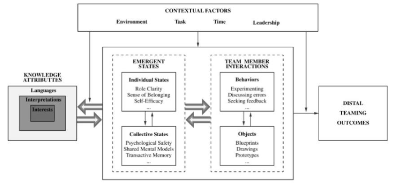CO-CREATION
HOW?
TOPIC 3
Successful partnerships
One way to substantiate co-creation is to enter into a partnership, as a form of collaboration between partners from various sectors (the government, NGOs, the business community, knowledge institutes). Each partner contributes “its” resources (funding, expertise, facilities, network or manpower). The partners share risks, responsibilities, and successes. (Ministry of Foreign Affairs - Development Cooperation, 2007).
Ingredients for successful partnerships have previously been explored by, e.g., Weemaes & Bruneel, within the framework of the Interreg SHINE project (Weemaes & Bruneel, 2017). Their study has generated several success factors for partnerships, which also correlate with certain mechanisms from the Ehlen wheel: complementarity, diversity, common goals, open communication, transparency.
The networking event with international peers has shown successful, sustainable partnerships to be a key factor for success in co-creation projects. Good partnerships are based on several essential conditions:
Complementarity and commitment
Collectively, partners can achieve more than individually: they perceive mutual dependence (funding, expertise, facilities, network or manpower). Acknowledging the complementarity of partners, adopting an interdepartmental approach. Viewing co-creation as a way to address issues from a chain-wide, interdisciplinary perspective. Commitment (engagement) among all the parties, considering ways to capitalise on opportunities. Commitment can differ widely in terms of time, duration, and nature. Clearly expressing and collectively acknowledging the requested engagement.
Common goal and added value for each partner
Pursuing a common goal, entertaining a vision comprising added value for each partner, are preconditions for considering a feasible project proposal. However, certain aspects of such a proposal may be elaborated by an individual partner, based on the common ground. Working towards setting down the vision in a structure, a recognised partnership on paper (a charter or gentlemen’s agreement, rather than a formal contract right away), and acting on that basis; ensuring that each partner will benefit from the collaboration.
Open communication and transparency as a basis for trust
Consciously building up trust between partners through open communication and transparency. Adopting a bottom-up approach, getting to know one another’s working methods with reference to concrete projects. Feeling it click.
Allowing partners to express what they believe in, what they expect to gain from the collaboration, how they will go about it to achieve this goal. Actively listening to understand what other parties mean. Tabling specific needs of the stakeholders in order to develop, feed, and elaborate a meaningful and innovative project. > Allowing information to be shared and the partner relationship to work.
TIPS & TRICKS
USEFUL TIPS ON BUILDING A SUSTAINABLE PARTNERSHIP:
MODEL EDMONSON & HARVEY
Model Edmonson en Harvey
Edmondson and Harvey (2018) have studied cross-border innovation teams. They have presented a model featuring several factors to be taken into account when working in multi-disciplinary teams focused on innovation (Edmondson & Harvey, 2017).

GUIDE TO ENHANCING
COLLABORATION UNIVERSITY HELSINKI
INSPIRATION
GOOD PRACTICES TO ILLUSTRATIE SUCCESSFUL PARTNERSHIPS
Model Edmonson en Harvey
Edmonson en Harvey (2018) bestudeerden grensoverschrijdende teams voor innovatie. Ze presenteren een model met een aantal factoren waarmee je rekening moet houden bij het werken in multidisciplinaire teams die gericht zijn op innovatie (Edmondson & Harvey, 2017).

Community-driven APPROACH PXL-Digital
Challenge Week Thomas More
Multicam LUCA School of Arts
MC3 ANTWERP MARITIME ACADEMY
SocorE ANTWERP MARITIME ACADEMY
